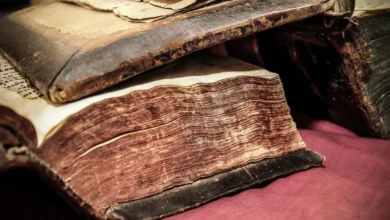No Censorship: Fahrenheit 451 in Persian

“Fahrenheit 451”, American writer Ray Bradbury’s internationally acclaimed novel, has been published in Persian by Mahi.
The book originally published in 1953 was translated by Mojdeh Daqiqi.
The novel stands as a classic of world literature set in a bleak, dystopian future. Today its message has grown more relevant than ever before.
Guy Montag is a fireman. His job is to destroy the most illegal of commodities, the printed book, along with the houses in which they are hidden.
Montag never questions the destruction and ruin his actions produce, returning each day to his bland life and wife, Mildred, who spends all day with her television “family.”
But when he meets an eccentric young neighbor, Clarisse, who introduces him to a past where people didn’t live in fear and to a present where one sees the world through the ideas in books instead of the mindless chatter of television, Montag begins to question everything he has ever known.
Many consider “Fahrenheit 451” to be Bradbury’s masterpiece, a scathing indictment of censorship set in a future world where the written word is forbidden.
Born in 1920 in Waukegan, Illinois, Bradbury graduated from a Los Angeles high school in 1938. Although his formal education ended there, he became a “student of life”, selling newspapers on LA street corners from 1938 to 1942, spending his nights in the public library and his days at the typewriter.
He became a full-time writer in 1943, and contributed numerous short stories to periodicals before publishing a collection of them, “Dark Carnival”, in 1947.










